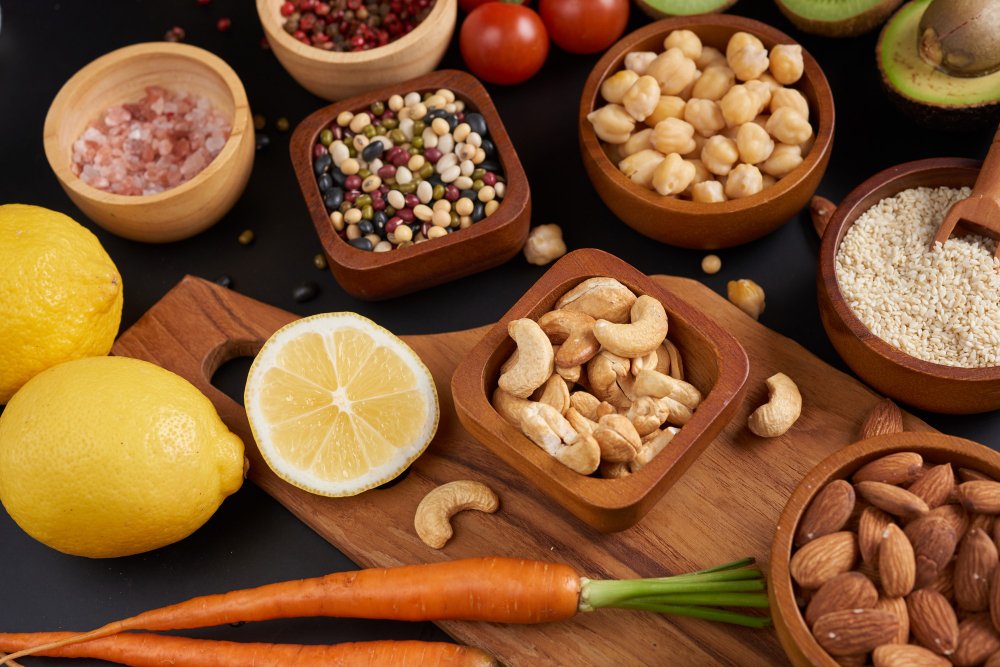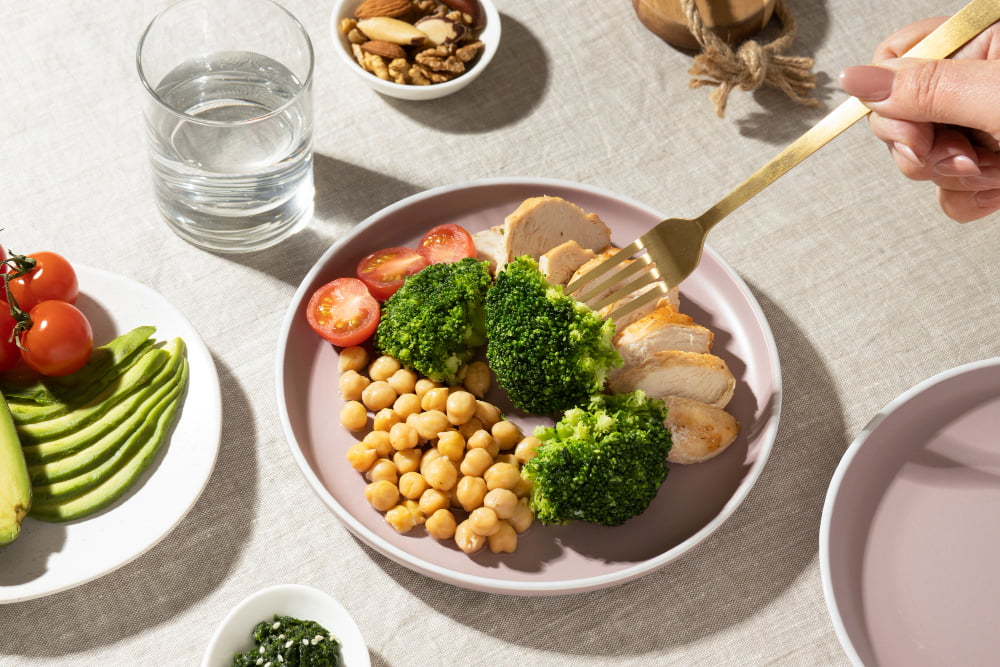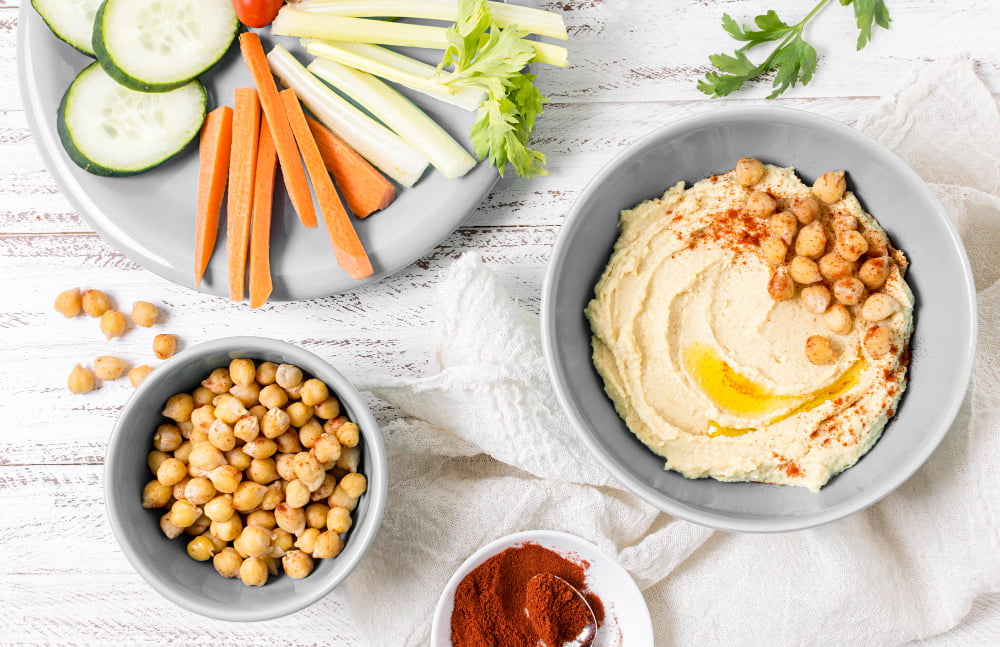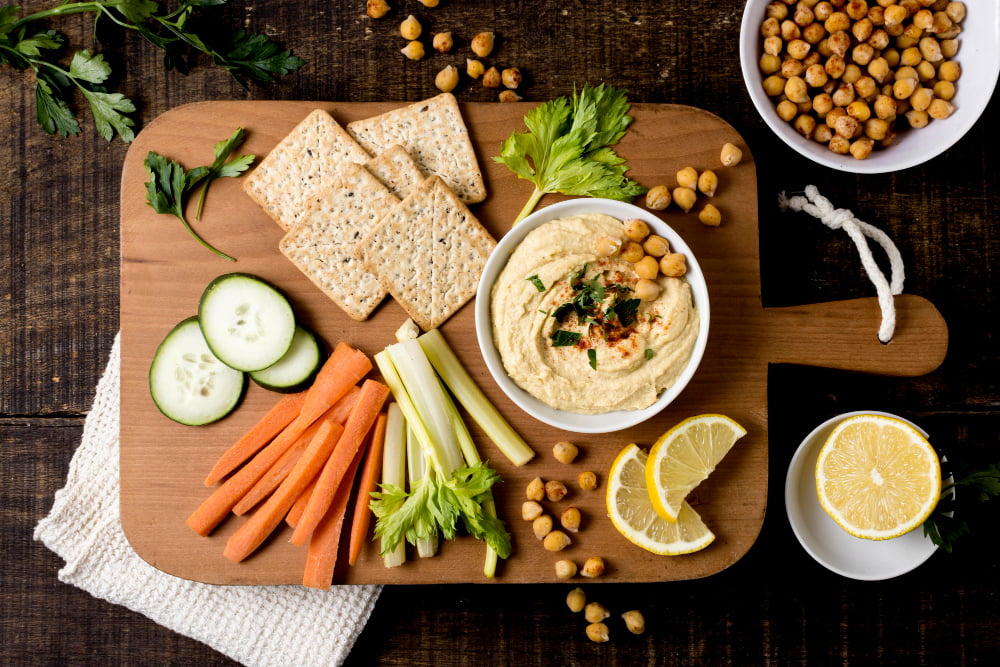The rising popularity of veganism and plant-based diets
Veganism and plant-based diets have gained tremendous popularity in recent years. More people are embracing these lifestyles for ethical, environmental, and health reasons. As a result, there is a growing need for comprehensive information on how to meet nutritional requirements while following a vegan diet. One crucial aspect is understanding the importance of protein in a vegan lifestyle.
Understanding the importance of protein in a vegan lifestyle
Protein plays a vital role in our overall health and well-being. It is essential for building and repairing tissues, supporting immune function, and producing enzymes and hormones. Many people have concerns about whether it is possible to consume enough protein on a vegan diet. However, with proper knowledge and planning, it is entirely achievable.
How this guide will help you discover a variety of vegan protein sources
In this comprehensive guide, we will explore various vegan protein sources, debunk myths surrounding plant-based proteins, and provide practical tips on incorporating them into your meals. Whether you are a vegan, considering a plant-based diet, or simply seeking to diversify your protein sources, this guide will serve as a valuable resource for discovering a wide range of vegan protein options.
I. Plant-Based Protein Basics
Exploring the different types of plant-based proteins
Plant-based proteins are derived from sources such as legumes, soy products, nuts, seeds, grains, and plant-based protein powders. Each category offers a unique profile of nutrients and flavors, allowing for endless possibilities in creating delicious and nutritious meals.
Understanding the amino acid profile of vegan protein sources
Amino acids are the building blocks of protein. While some plant-based proteins may be deficient in certain essential amino acids, combining different sources can create complete protein profiles. Understanding these combinations ensures that you consume a wide range of amino acids necessary for optimal health.
Dispelling myths about plant-based protein quality
There is a common misconception that plant-based proteins are inferior to animal-based proteins. However, research shows that well-planned vegan diets can provide all the essential nutrients, including protein, needed for a healthy lifestyle. By dispelling these myths, we empower individuals to make informed choices about their dietary preferences.

II. Essential Vegan Protein Sources
A. Legumes and Pulses
- Lentils: A versatile and nutrient-dense legume
Lentils are a staple in many cuisines worldwide due to their versatility and impressive nutritional profile. They are rich in protein, fiber, iron, and folate. From soups and stews to salads and spreads, lentils can be incorporated into various dishes, adding a satisfying texture and a substantial protein boost.
- Chickpeas: Protein-packed and perfect for hummus lovers
Chickpeas, also known as garbanzo beans, are not only protein-rich but also a great source of dietary fiber. They are the key ingredient in hummus, a popular Middle Eastern dip, and can be roasted for a crunchy snack or used in salads, curries, and wraps.
- Black Beans: Rich in fiber and essential minerals
Black beans are a nutrient powerhouse, offering a substantial amount of protein, fiber, iron, and magnesium. They are a versatile ingredient, commonly used in Latin American and Caribbean cuisines. From black bean burgers to hearty chili, these beans can be the star of numerous savory dishes.
B. Soy and Soy Products
- Tofu: A staple in vegan cuisine with high protein content
Tofu, made from soybean curds, is a versatile and protein-dense ingredient widely used in vegan cooking. Its mild flavor and ability to absorb various seasonings make it suitable for stir-fries, curries, soups, and even desserts. Tofu comes in different textures, from silken to extra firm, offering a range of culinary possibilities.
- Tempeh: Fermented soy product with added nutritional benefits
Tempeh is a fermented soybean product that boasts a nutty flavor and a firm texture. Apart from being an excellent source of protein, it also contains beneficial probiotics, which support gut health. With its unique taste and texture, tempeh is a fantastic option for grilling, baking, or adding to stir-fries and salads.
- Edamame: A delicious and protein-rich snack
Edamame refers to young soybeans, usually harvested before they fully mature. These green pods are not only a fun and flavorful snack but also a nutritious source of protein. Boiled or steamed, edamame can be enjoyed on its own, added to salads, or used as a protein-rich topping for various dishes.
C. Nuts and Seeds
- Almonds: A crunchy and protein-packed nut
Almonds are not only a tasty snack but also a fantastic source of plant-based protein. Packed with healthy fats, fiber, and essential minerals, almonds provide a satisfying crunch and make a nutritious addition to both sweet and savory recipes. They can be enjoyed raw, roasted, or ground into almond butter.
- Chia Seeds: Rich in omega-3 fatty acids and a complete protein
Chia seeds have gained popularity as a superfood, thanks to their impressive nutritional profile. They are rich in omega-3 fatty acids, fiber, and antioxidants. These tiny seeds can absorb liquid and form a gel-like consistency, making them ideal for puddings, smoothies, and baked goods.
- Hemp Seeds: A great source of plant-based protein and healthy fats
Hemp seeds are derived from the Cannabis sativa plant and have gained recognition for their nutritional value. They are a complete protein, meaning they contain all nine essential amino acids. Additionally, hemp seeds are rich in omega-3 and omega-6 fatty acids, making them a valuable addition to salads, granolas, and smoothies.
D. Grains and Cereals
- Quinoa: A complete protein grain with numerous health benefits
Quinoa is a versatile grain that stands out due to its high protein content and complete amino acid profile. It is also gluten-free and rich in fiber, iron, and magnesium. From salads and pilafs to porridge and veggie burgers, quinoa offers endless possibilities for incorporating protein into your meals.
- Oats: Versatile and fiber-rich with a decent protein content
Oats are a beloved breakfast staple and a source of sustained energy. While they are not considered a complete protein, oats still provide a decent amount of protein along with dietary fiber, vitamins, and minerals. They can be enjoyed as oatmeal, granola, overnight oats, or added to baked goods for a wholesome boost.
- Brown Rice: Nutritious whole grain option for protein supplementation
Brown rice, unlike its refined counterpart, retains its bran and germ, making it a nutritious whole grain. While it is not a significant protein source, it still contributes to your overall protein intake. With its nutty flavor and chewy texture, brown rice serves as a filling base for stir-fries, grain bowls, and pilafs.
E. Plant-Based Protein Powders
- Pea Protein: Easily digestible and ideal for muscle recovery
Pea protein is a popular plant-based protein powder made from yellow split peas. It is highly digestible and rich in branched-chain amino acids, which are essential for muscle recovery and growth. Pea protein powders can be blended into smoothies, mixed into baked goods, or used as a protein boost in various recipes.
- Rice Protein: Allergen-friendly option with a mild taste
Rice protein powder is derived from brown or white rice and offers a hypoallergenic alternative for those with dietary restrictions or sensitivities. While it is not a complete protein on its own, it can be combined with other protein sources to create a balanced amino acid profile. Its mild flavor makes it suitable for blending into shakes and smoothies.
- Hemp Protein: Packed with essential amino acids and minerals
Hemp protein powder is derived from hemp seeds and provides a rich source of plant-based protein. It contains all nine essential amino acids and is packed with minerals such as magnesium, iron, and zinc. With its slightly nutty flavor, hemp protein powder can be incorporated into smoothies, energy bars, and baked goods.

III. Incorporating Vegan Protein into Your Meals
A. Breakfast Ideas
- Protein-rich smoothie bowls and shakes
Start your day with a protein-packed smoothie bowl or shake. Blend your favorite fruits with plant-based protein powder, spinach or kale, and a liquid of your choice. Top it with nuts, seeds, granola, or fresh fruit for added texture and flavor.
- Overnight chia seed pudding with added protein boost
Prepare a delicious and nutritious overnight chia seed pudding by combining chia seeds, plant-based milk, and a sweetener of your choice. For an extra protein boost, mix in a serving of your preferred vegan protein powder. Let it sit overnight, and in the morning, enjoy a creamy and protein-rich pudding.
- Scrambled tofu or chickpea omelets for a savory start
For those craving a savory breakfast, scrambled tofu or chickpea omelets are excellent options. Season tofu or chickpea flour with herbs, spices, and vegetables, and cook it until it reaches a scrambled or omelet-like consistency. Serve it with whole-grain toast and a side of fresh greens for a satisfying and protein-packed meal.
B. Lunch and Dinner Recipes
- Quinoa and vegetable stir-fry with tofu or tempeh
Create a wholesome and protein-rich meal by sautéing quinoa, colorful vegetables, and your choice of tofu or tempeh. Season it with soy sauce, garlic, and ginger for a delicious stir-fry bursting with flavors and nutrients.
- Chickpea salad with a variety of colorful veggies
Whip up a refreshing and protein-packed chickpea salad by combining cooked chickpeas with a medley of fresh vegetables such as cherry tomatoes, cucumbers, bell peppers, and red onions. Drizzle it with a tangy dressing and garnish with herbs for a vibrant and satisfying lunch.
- Lentil curry or stew for a hearty and protein-packed meal
Warm up with a hearty lentil curry or stew. Simmer lentils with aromatic spices, vegetables, and a flavorful broth to create a nourishing and protein-packed dish. Serve it over brown rice or with whole-grain bread for a complete and comforting meal.
C. Snacks and Desserts
- Homemade energy bars with nuts, seeds, and protein powder
Create your own nutritious energy bars by combining a variety of nuts, seeds, dried fruits, and a plant-based protein powder of your choice. Mix the ingredients together, press them into a baking dish, and refrigerate until firm. Cut them into bars or squares for a convenient and protein-rich snack.
- Roasted chickpeas or spiced nuts for a satisfying snack
Roasted chickpeas and spiced nuts offer a flavorful and protein-packed snack option. Toss drained and dried chickpeas or nuts with olive oil, spices, and a pinch of salt. Roast them in the oven until crispy and golden. Enjoy them on their own or as a crunchy topping for salads or soups.
- Vegan protein cookies or bliss balls for guilt-free indulgence
Satisfy your sweet tooth with vegan protein cookies or bliss balls. Mix together ingredients such as oats, nut butter, plant-based protein powder, and a natural sweetener. Shape the mixture into cookies or bite-sized balls and refrigerate until firm. These guilt-free treats provide a delightful balance of flavors and protein.

IV. Tips for Optimal Vegan Protein Intake
Calculating your protein needs based on activity level and goals
To ensure you meet your protein needs, consider factors such as your activity level and specific goals. Calculate your protein requirements based on your body weight and desired protein intake per kilogram or pound. This will provide a guideline for determining the appropriate amount of protein to incorporate into your daily meals.
Combining complementary plant-based proteins for complete amino acid profiles
While individual plant-based proteins may lack certain essential amino acids, you can create complete amino acid profiles by combining different protein sources. For example, pairing legumes with grains or seeds can provide a balanced amino acid composition. Explore various combinations to maximize the nutritional value of your meals.
Preparing and cooking vegan protein sources for maximum nutritional value
Proper preparation and cooking methods can enhance the nutritional value of vegan protein sources. Soaking legumes and grains before cooking can improve digestibility and nutrient absorption. Lightly steaming or sautéing vegetables preserves their nutrients. Experiment with different cooking techniques to retain the maximum nutritional benefits of your plant-based proteins.
V. Addressing Common Concerns and FAQs
Can you get enough protein on a vegan diet?
Absolutely! A well-planned vegan diet can provide all the essential nutrients, including protein, required for optimal health. By incorporating a variety of plant-based protein sources and paying attention to your individual protein needs, you can easily meet your protein requirements on a vegan diet.
What about protein absorption and bioavailability in plant-based sources?
While it is true that some plant-based proteins may have slightly lower bioavailability compared to animal-based proteins, this can be overcome by consuming a diverse range of protein sources. Combining complementary plant-based proteins and ensuring adequate overall protein intake will compensate for any potential differences in absorption.
Is it possible to build muscle on a vegan diet?
Absolutely! Building muscle on a vegan diet is entirely achievable. By consuming a variety of plant-based protein sources, meeting your individual protein needs, and engaging in regular resistance training, you can support muscle growth and development.

Summarizing the key takeaways from The Complete Guide to Vegan Protein Sources
In conclusion, a vegan diet can provide an abundance of protein through various plant-based sources. By exploring legumes and pulses, soy and soy products, nuts and seeds, grains and cereals, and plant-based protein powders, you can discover a wide array of options to fulfill your protein needs.
Encouraging readers to experiment with various vegan protein sources
It is essential to embrace culinary creativity and experiment with different vegan protein sources to keep meals exciting and enjoyable. Discover new recipes, try unfamiliar ingredients, and explore the diverse world of plant-based protein options.
Emphasizing the benefits of a balanced and diverse plant-based diet
Remember that a balanced and diverse plant-based diet is key to meeting all your nutritional needs, including protein. By incorporating a variety of fruits, vegetables, whole grains, and plant-based proteins, you can thrive on a vegan lifestyle while enjoying its numerous health benefits.
With this comprehensive guide to vegan protein sources, you now have the knowledge and inspiration to embark on a delicious and nutritious plant-based journey. Enjoy the process of discovering new flavors, nourishing your body, and embracing the benefits of a balanced and diverse plant-based diet.






